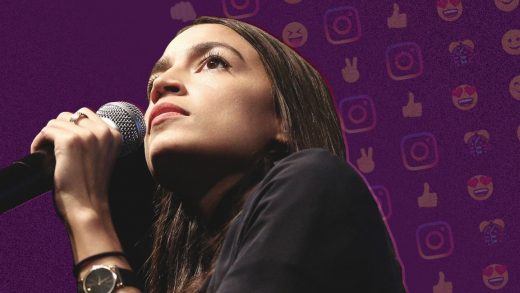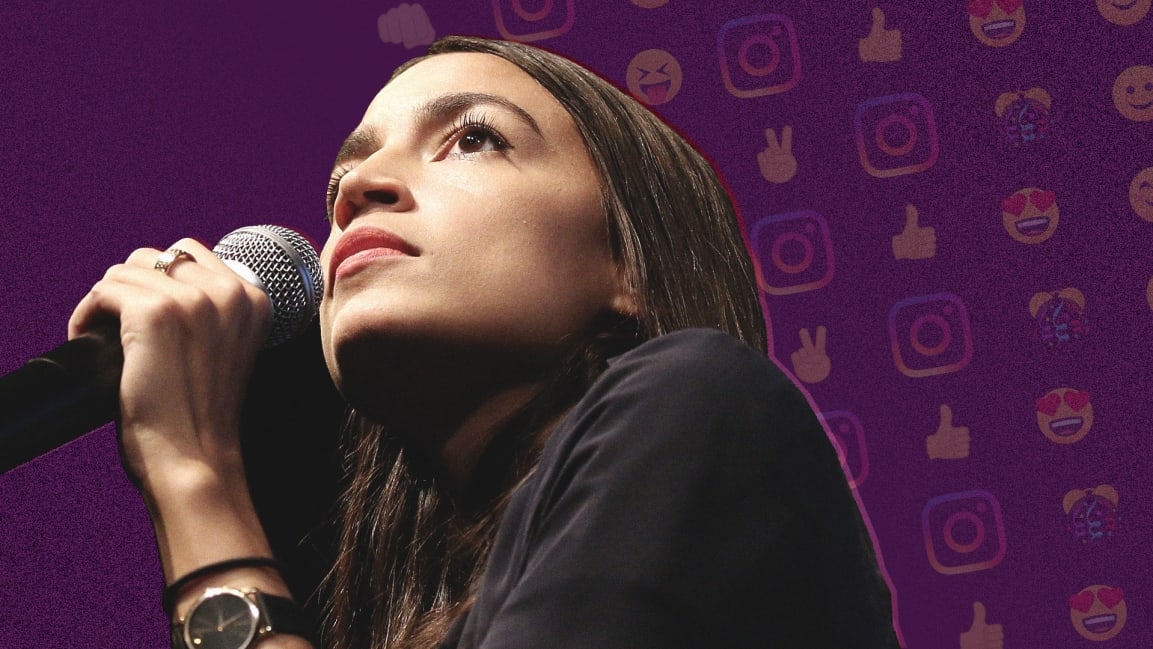Trump has Twitter. Alexandria Ocasio-Cortez is winning Instagram
“Hey guys, coming at you this morning with a super fresh face, cause we got crazy news!” said Alexandria Ocasio-Cortez, the presumptive next representative for New York’s 14th congressional district. She posted this while leaning back in a chair in what looks like her apartment.
Utilizing one of Instagram’s fun sunglasses filters, she flips her head back every few words to switch to a new set of shades. YOU CAN DO IT flashes on the screen, alongside a camera emoji.
“The Wall Street Journal’s coming to my apartment to take some photos this morning,” she says. “Aaahhh!”, she adds. “Or this afternoon. Aaahhh!”
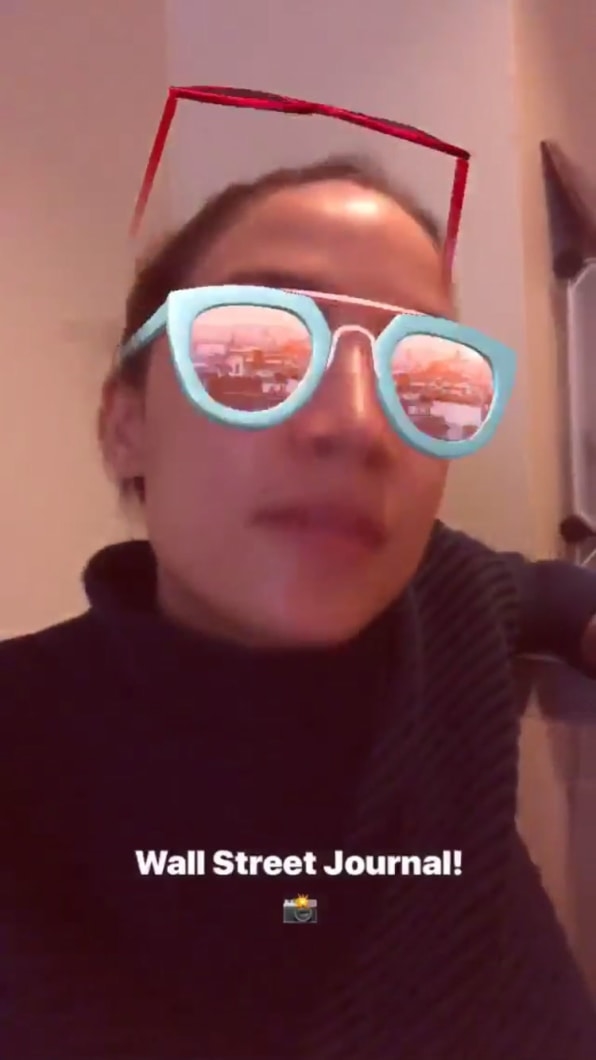
Up until her surprise upset win over Democratic Party incumbent and Democratic Caucus Chair Joe Crowley, Ocasio-Cortez, a Bronx native and member of the Democratic Socialists of America, had not been seen in the top five major newspapers in the United States. She has since appeared on the cover of Vanity Fair, been interviewed in Rolling Stone, Interview, and Jacobin, and been attacked on sites like the National Review and Breitbart.
And through it all, she maintains a strong presence on Instagram, using both the regular posts and the ephemeral “stories” feature first popularized by Snapchat, which by default disappear but which can also be pinned to one’s Instagram user profile. The public image of this working-class Latina woman stands in contrast to that of President Donald Trump and much of his cabinet, white men born into wealth. And if Trump has come to fame with his innovative and emotive uses of Twitter, Ocasio-Cortez is pushing the boundaries of how a future elected official can use Instagram on both the national and local stage.
“Running for office,” she said during an Ask Me Anything in the midst of her campaign, “I need to make decisions about policy and fashion everyday.” The video shakes, she once again seems to be in her apartment, and she seems to personally be holding the phone in selfie mode. Plastered on the video in white text on top of purple highlight, she’s written the words:
Running for office means that I have to navigate policy AND my personal presentation. My personal appearance gets commented on ALL THE TIME on the campaign trail.
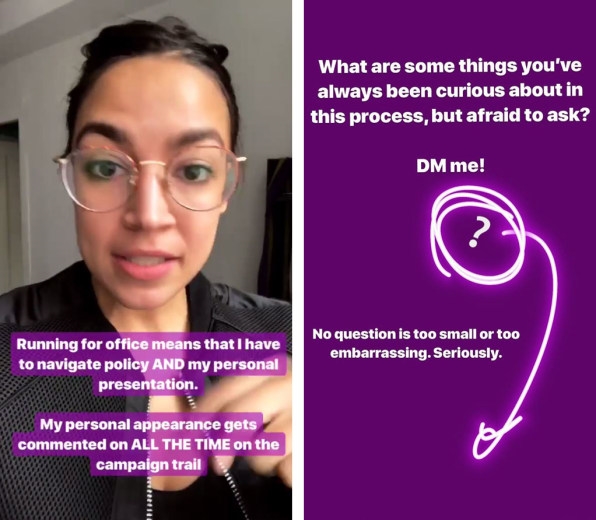
The questions come in, tackling issues like the #MeToo movement, how networking works, running for office as Latinx, and whether to go to law school.
“Did you get to see/hear the ‘list’ of politicians to avoid? Or not be caught alone with?” one person asks.
“I have a list of men in media to avoid,” Ocasio-Cortez responds in text.
One person sent along a direct message: “So sometimes I worry as a gay Latina woman, how that can impact my ticket for office.” (On top of the post, Ocasio-Cortez has added a sticker of a penguin skiing.)
“The good (?) news,” she responds in bold white font on top of blue, with a few rainbow emoji sprinkled in, “is that you’re going to get personally attacked no matter who you are – gay or straight. It’s important to have your friends and family around you – helps a LOT.”
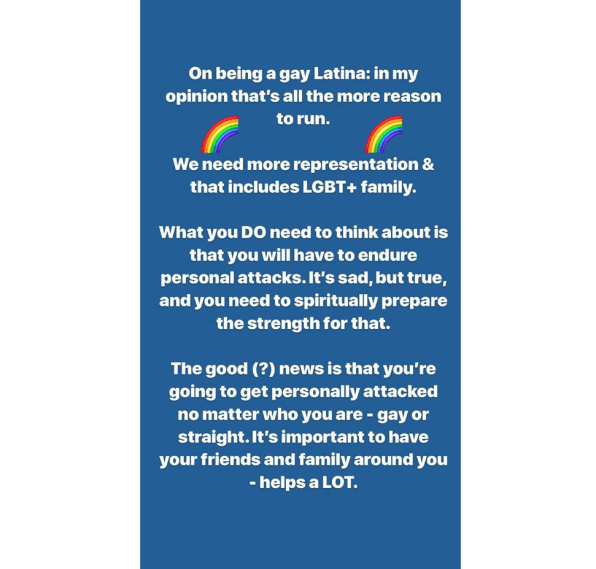
American politicians on Instagram and Snapchat are not at all a new phenomenon. As early as 2016, Hillary Clinton joined Snapchat, as did then-First Lady Michelle Obama. Donald Trump, for instance, maintains an Instagram presence with 10.3 million followers, while Ivanka Trump boasts 4.3 million. Up-and-coming progressive leaders like Beto O’Rourke and Ilhan Omar also have strong Instagram presences, as do established Republican figures like Secretary of State Mike Pompeo, Lindsey Graham, and Ted Cruz. Many of these posts seem sincere, but written by staffers. Often, they contain the work of professional photographers.
And alongside professional photographs, Donald Trump’s Instagram literally includes screenshots and remixed versions of his tweets. “It further solidifies Trump’s Twitter as the official voice of the president, along the lines of ‘If you want to get the info on what the president is talking about, head over to his Twitter,’” says Hannah Guy, a postgraduate at Manchester Metropolitan University who’s analyzed Trump’s use of Instagram. “His Instagram is almost like a refrained version of his Twitter; it’s controlled, it looks more official, yet Trump’s ego clearly leaks through.”
What’s striking about Ocasio-Cortez’s style is just how digitally native it seems. Sprinkled with emoji, cute stickers, hand-drawn illustrations on top of content, colorful fonts, and not a small number of selfie videos, she embraces all the affordances of Instagram. On Halloween night, for instance, she started up a live stream while she prepared ramen in an Instant Pot. As she chopped up vegetables, she answered questions from her followers about her thoughts on politics and the midterms. A portion of the video used the VCR filter, which created a grainy image along with a timecode, and she then posted the results of her meal (yes, it looked tasty), along with a recipe on her Pinterest account.
Even her bio, stamped with a bright blue check that indicates she’s been verified by the company, also contains other emoji, such as a ballot box to encourage people to vote November 6th, and a money bag alongside the declaration that she’s “No lobbyist.”
To be fair, her posts do include professional photographs of her and seem to be written by staffers, but others are reposts of fan art, like one by illustrator @kimothyjoy which quotes Ocasio-Cortez as saying in Cooties Zine, one of the early online magazines to cover her, “Ultimately feminism is about women choosing the destiny that they want for themselves.” One snarky post includes a screengrab of Fox News quoting her saying “Get Used to Me Slaying,” to which she responds, “I’d like to thank Fox News” and a laughing emoji.
In 2012, Facebook acquired Instagram for a total value of $1 billion. The move, which drew headlines for its unprecedented valuation, proved to be a savvy one business-wise. As young people have been moving away from Facebook.com, they’ve been migrating to Instagram. The site is popular with young people of color in urban areas. Many of those people are old enough to vote. Many of them live in New York.
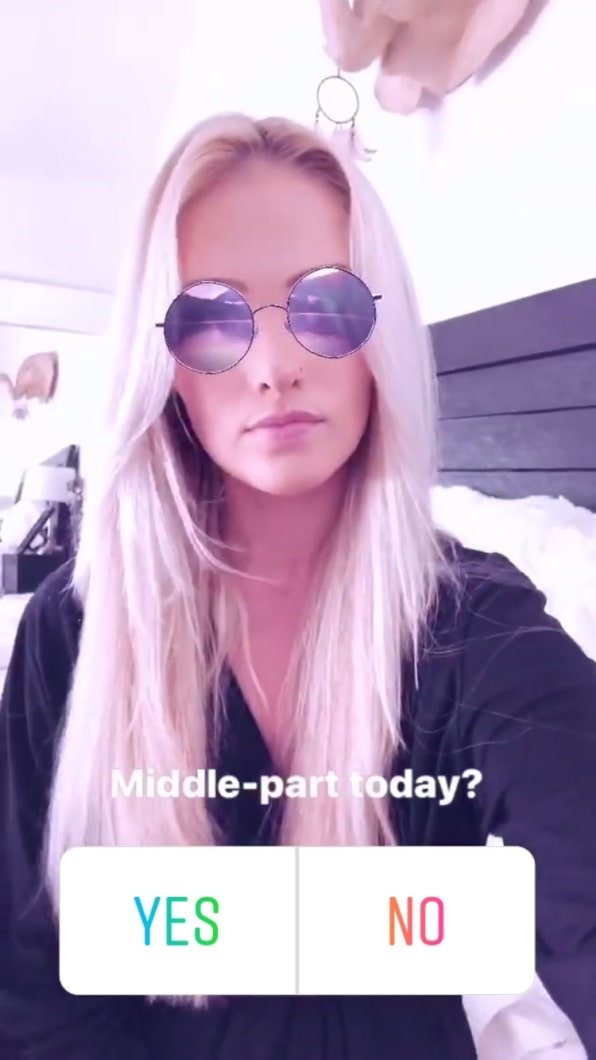
It is in this context that we should expect to see more American political leaders and those on the campaign trail to utilize Instagram more and more. And while many maintain a strong presence, it’s Ocasio-Cortez, who would have been 21 when Instagram was released, who’s showing the full range of possibilities.
Others in politics are no slouches on the site. Fox News commentator Tomi Lahren regularly posts Boomerang videos–an animated GIF-like feature where the video boomerangs back and forth, rather than in a loop–at different parties and public events, along with teasers to her famous monologues.
Ivanka Trump recently hit the road in Kentucky and Virginia and posted her own Instagram story before staffers took hold. “I am in eastern Kentucky, and I’m looking for some help in Big Sandy,” she said, holding the phone to herself before panning to the view outside. She then posted a Boomerang video of herself opening and closing a book. The text on the video says “Virginia… missing dinner with the kids but I won’t come home empty handed—we found an amazing bookstore!”
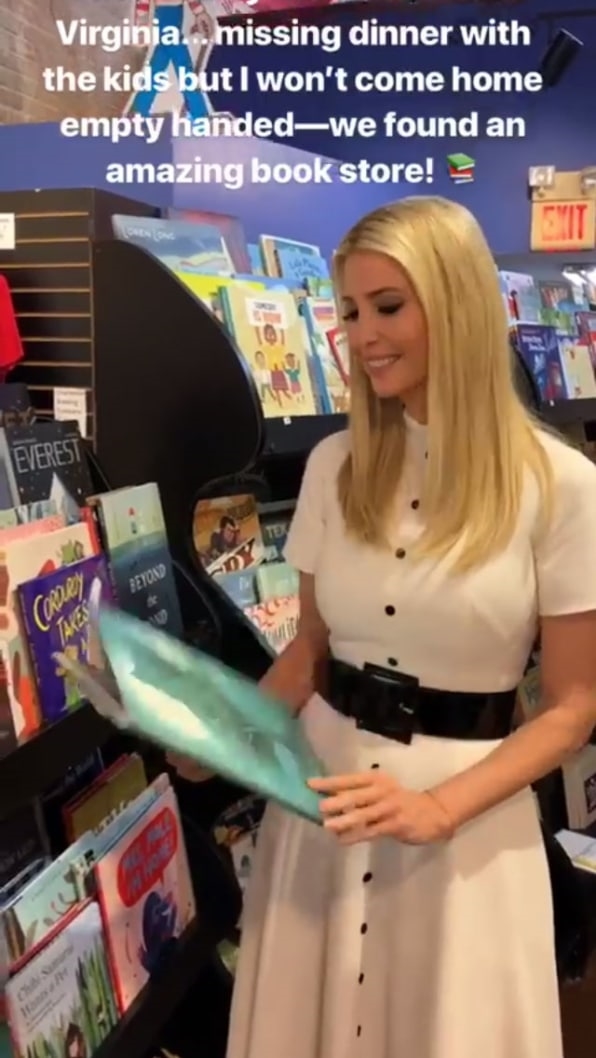
Lahren, 26, and Trump, 36, are near contemporaries with Ocasio-Cortez, 29, which may partly explain their facility on the platform. They’ve all rapidly adapted to Instagram’s affordances, and they all contain similar material, but the differences between their forms of self-promotion are equally illuminating. As a wealthy individual so close to power, Trump’s Instagram is filled with professional shots as well as stories. Lahren’s contains mostly selfies, and the commentator’s face and body are front-and-center. Ocasio-Cortez’s Instagram is a more heterogeneous mix of professional shots and selfies.
These differences reflect their personalities, but perhaps also the level of resources they have access to. As political figures become more prominent, they often rely on professional assistance to curate their media feeds.
But while journalists and researchers develop clever ways to determine when Trump himself is tweeting on his account, there’s zero ambiguity with a selfie video: The post is coming from the person holding the phone. Minnesota House candidate Ilhan Omar has posted celebratory selfies and videos. Rufus Gifford, another literal reality star turned political candidate, regularly posts selfie videos, and Jane Kim, running for state Senate in San Francisco, often posts her own commentary.
But candidates can still be effective without running their own account: On the campaign trail, Texan senate candidate Beto O’Rourke let a young supporter take over his account, Florida governor candidate Andrew Gillum uses pinned stories on his profile to cover key issues like gun safety and education, and Georgia governor candidate Stacey Abrams utilizes colorful posts and strong fonts.
In addition to the groundbreaking posters from her design team and the videos produced for virality, the Ocasio 2018 campaign is showing that an interconnected media strategy–where each post is specifically designed for the platform, rather than cut and pasted to different platforms–can give a candidate an edge among their constituents. This is something reality stars have long understood, as have leaders seeking to build cults of personality.
As these techniques evolve and show impact, we will see more states and state leaders utilizing Instagram’s full set of affordances to promote, proselytize, popularize themselves–or propagandize. We will see the platform and others like it that emphasize visual communication as the new battlegrounds for narrative contention. Russian propagandists also used Instagram extensively to spread incendiary and false posts during and after the 2016 election, and Facebook recently released data showing that influence operations from Iran focused on Instagram. The Southern Poverty Law Center and Mother Jones have shown that messages from hate groups proliferate on the site. If tools, techniques, and platforms are shown to be influential, we should expect others in power to learn to adopt them for different ends, and the vanishing nature of Stories will inevitably raise questions about accountability and archival records for our public representatives.
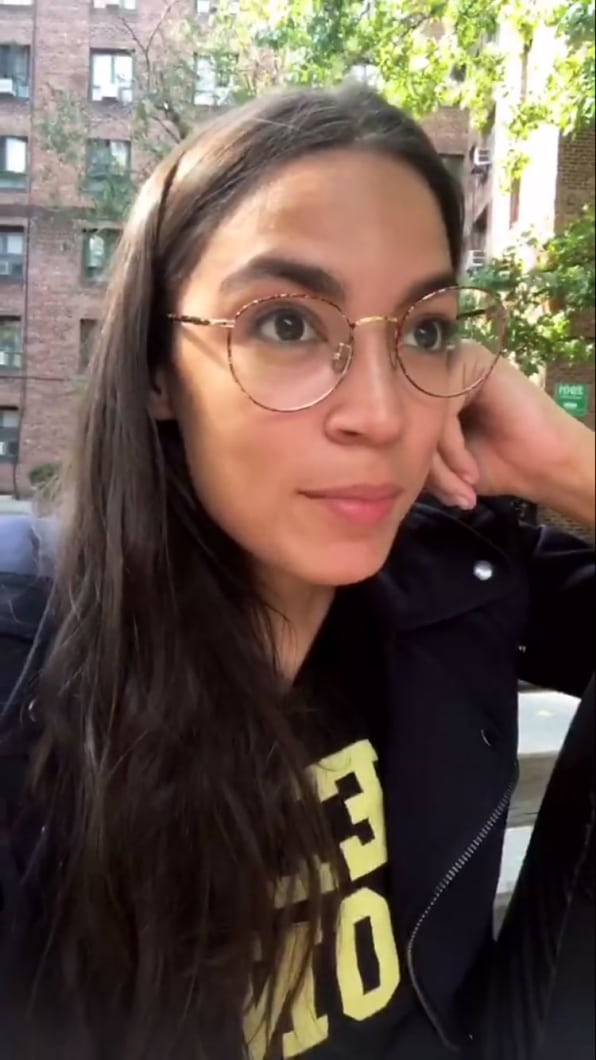
For now, however, among all U.S. political leaders on the national stage, it’s Ocasio-Cortez who seems to understand the platform’s media affordances the most. And while it’s difficult to define what authenticity in political communications really means, her online presence could certainly be a case study. She comes across as her most authentic self on the site, a young person in a Bronx apartment with a few fun stickers and a smartphone.
“So I mostly seem to IG story only on times when I’m taking a break but that’s just because that’s when I have time,” she says in a recent series of posts she titles “Pep Talk,” which she addresses especially to “women, gender expanding people, people of color, working class people.”
She’s relaxed on a park bench, and the phone shakes more than normal as people walk behind her with grocery bags back to their apartments. The words on her T-shirt are backward, suggesting it truly is a selfie video. It may be ironic to comment on her appearance, but the difference in this video versus her more polished public appearance is striking: she wears round glasses and understated makeup, and her mood is intimate, personal, and personable, as if speaking with a close friend and not 300,000 followers.
“But I think I’m going to be changing it up a little bit,” she notes. “I’ll probably be here more often.”
An Xiao Mina (@anxiaostudio) is author of Memes to Movements: How the World’s Most Viral Media is Changing Social Protest and Power. She leads the product team at Meedan, is a cofounder of the Credibility Coalition, and is a research affiliate at the Berkman Klein Center for Internet and Society.
Ray Drainville (@ardes_ray) is a researcher on iconography and social media at Manchester Metropolitan University and a member of the Visual Social Media Lab.
Fast Company , Read Full Story
(60)

